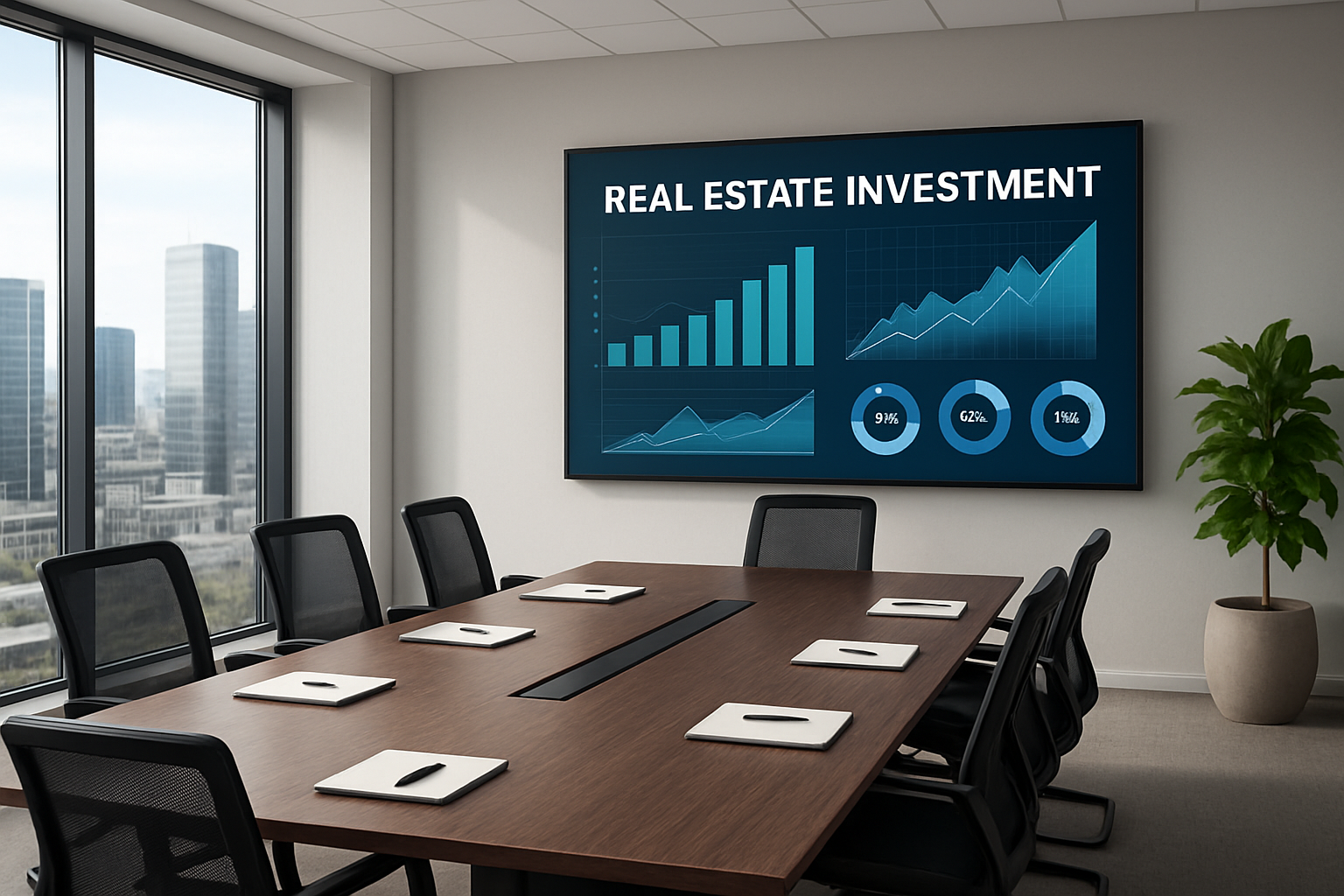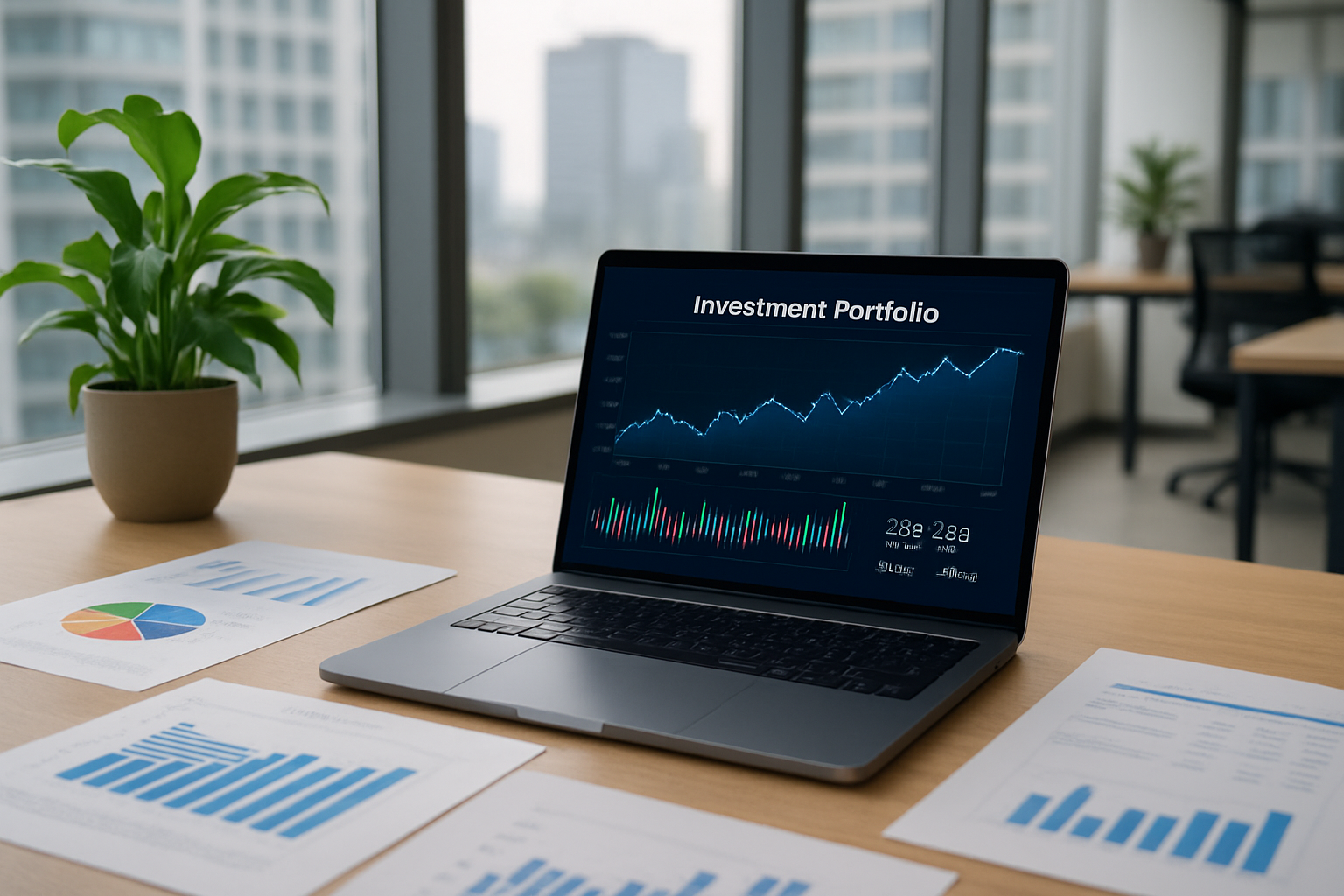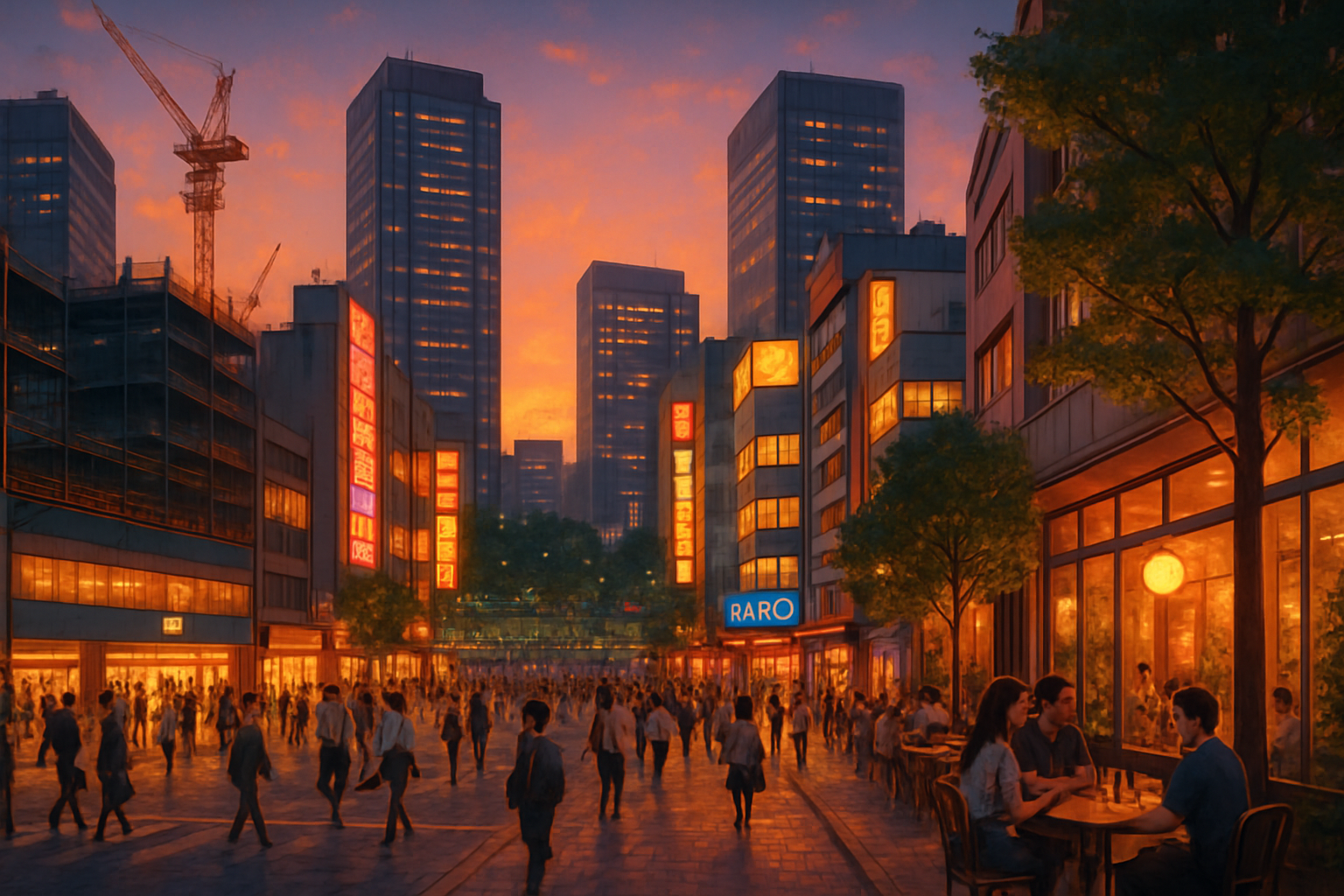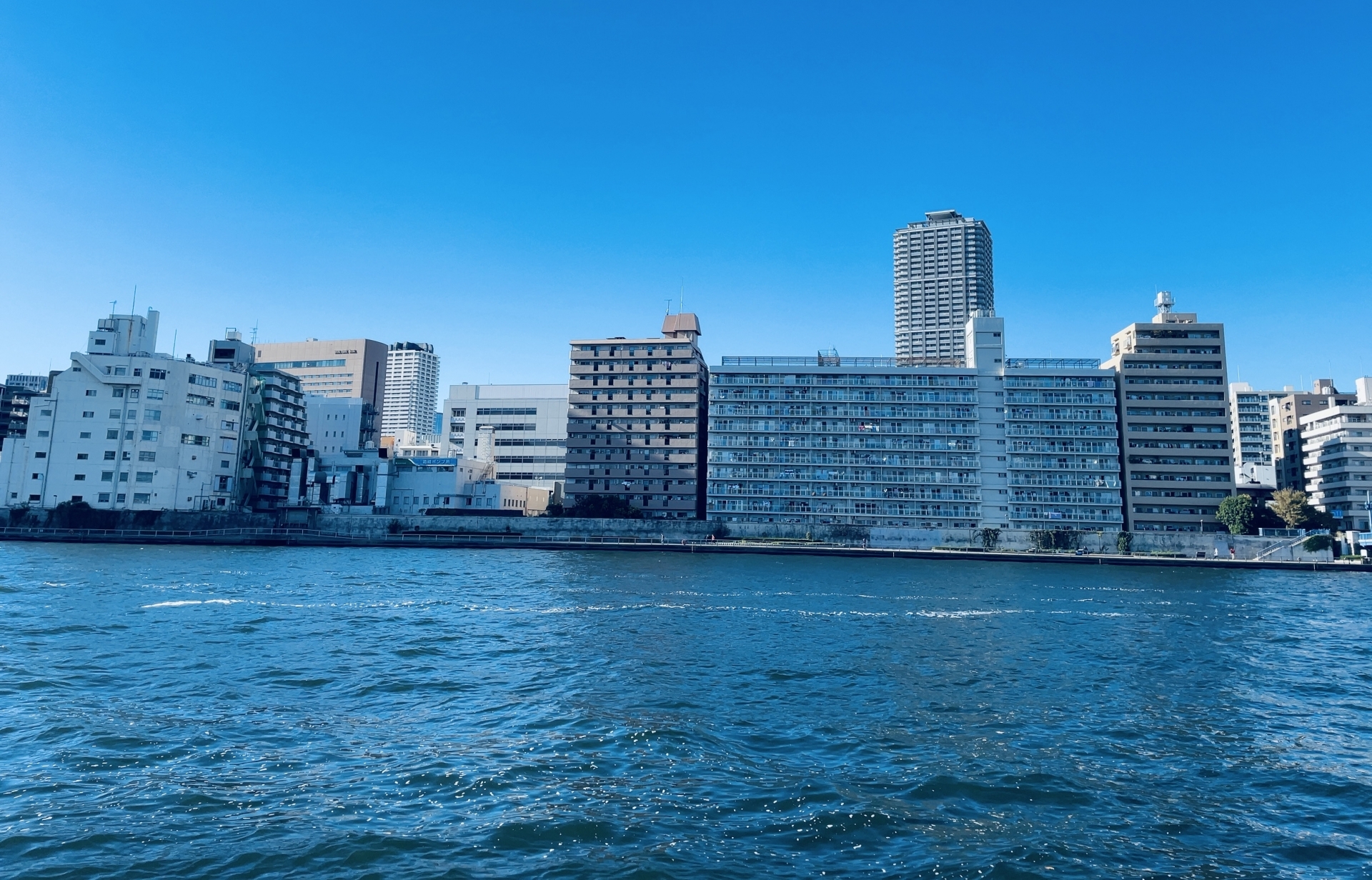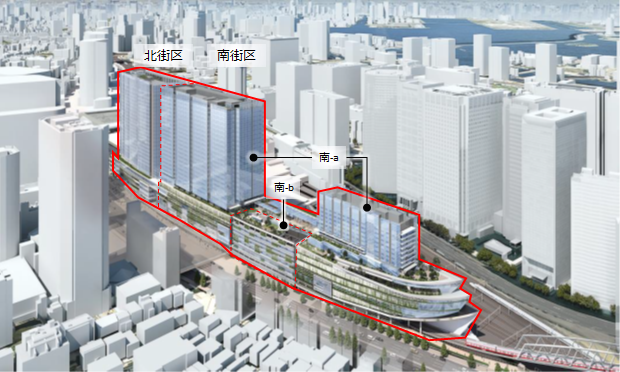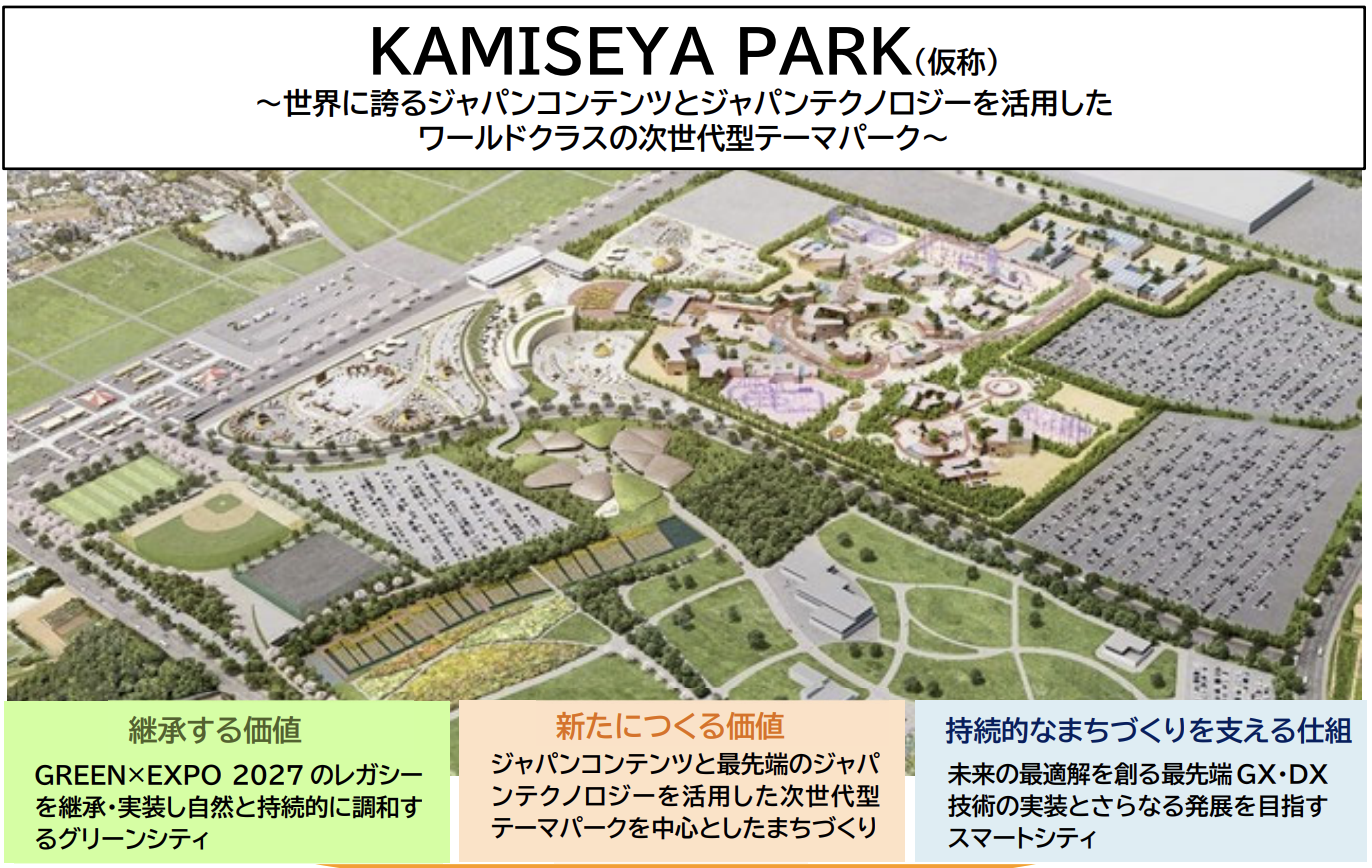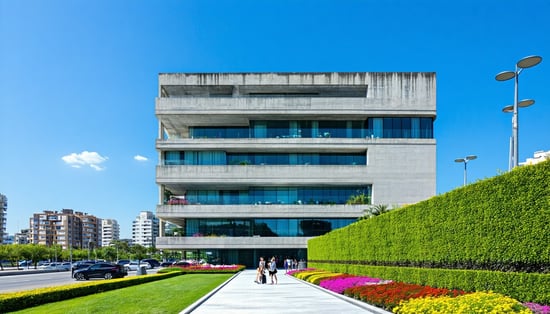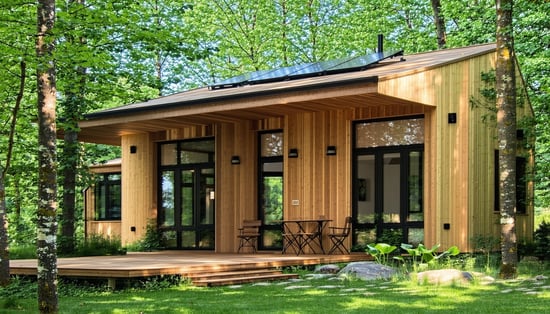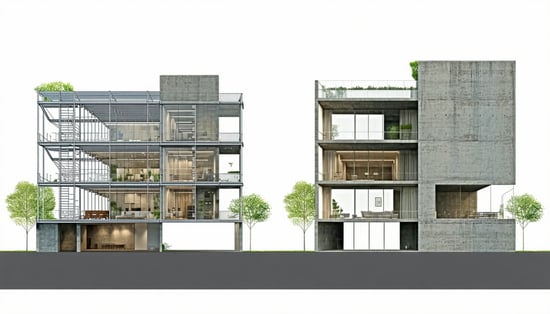In recent years, the construction costs of new buildings have skyrocketed in the real estate industry, creating a situation that real estate investors cannot afford to ignore. Factors such as rising prices of construction materials, increased labor costs, and changes in the global economic environment have all contributed to the ongoing rise in construction costs. The average price of new condominiums has surged in recent years, with a 27.8% increase over the six-year period from the 2017 fiscal year to the 2023 fiscal year in the Tokyo metropolitan area alone. The escalating construction costs are rippling through the entire real estate market, forcing investors to reevaluate their strategies.
This article will provide a detailed explanation of the background and reasons behind the rise in construction costs for new properties, as well as the specific impact on the real estate market. Furthermore, we will consider the measures that real estate investors should take at this time.
Background and reasons behind the rise in construction costs for new properties
First, we will summarize the background and main reasons behind the sharp rise in construction costs for new properties. Multiple factors are at play, ranging from global supply chain issues to changes in the domestic labor environment.
- Rising material costs (increase in construction material prices): The prices of materials necessary for construction have skyrocketed due to global supply and demand imbalances. A representative example is the wood shock (global wood shortage and price surge). In the second half of 2021, wood prices rose sharply due to a surge in demand in North America and China, which also led to a significant increase in construction costs for wooden houses in Japan. While wood prices have stabilized somewhat from their peak levels, they remain elevated and have not returned to pre-Wood Shock levels. Similarly, a sharp rise in steel prices, referred to as the “Iron Shock,” has also occurred. Following a temporary decline in iron demand due to the COVID-19 pandemic, economic recovery has led to a surge in demand, outpacing supply and causing prices for steel structures and other materials to skyrocket. Furthermore, Russia's invasion of Ukraine and the resulting instability in the international situation have further fueled the rise in material prices. Restrictions on imports of wood and metals, as well as price hikes, have contributed to increased costs for construction materials in general. Additionally, the semiconductor shortage cannot be overlooked. Although semiconductors may seem unrelated at first glance, they are essential components in building equipment such as air conditioners and elevators. The global semiconductor shortage caused by the US-China trade friction and the surge in demand due to the COVID-19 pandemic has contributed to the rise in equipment costs. In addition, the surge in fuel and energy prices is pushing up material transportation and production costs (such as increases in gasoline and electricity prices and container shipping rates). And then there is the unique factor in Japan: the weak yen (decline in the value of the yen). A weaker yen increases the cost of imported materials, which directly affects domestic construction costs. These multiple factors have combined to cause material prices to skyrocket in recent years. As a result, construction material costs have risen by an average of approximately 18% nationwide in just three years from fiscal 2021 to March 2024.
- Rising labor costs (increase in construction labor costs): The shortage of labor is also causing a serious rise in labor costs. In the construction industry, the aging of skilled workers and the shortage of young talent are progressing, leading to an increase in per-person labor costs (daily wages and salaries of workers). In fact, the public works design labor unit price (the wage standard for craftsmen in public works) rose by approximately 15% between March 2021 and March 2024. This means an increase in labor costs for construction companies and is a factor pushing up the overall cost of construction. Underlying this is the “2024 Problem” (a issue arising from the implementation of the Working Style Reform-related Laws in 2024, which will impose upper limits on overtime work in the construction industry, raising concerns about labor shortages). In industries that can no longer rely on long working hours, there is a need to increase personnel, but chronic labor shortages make it difficult to fill positions easily, leading to higher labor costs per worker. Additionally, efforts to “rationalize statutory welfare expenses” (appropriately incorporating social insurance premiums for construction workers into construction costs) are underway, leading to an increase in nominal construction costs as previously unaccounted labor costs are properly reflected. Furthermore, while Japan has historically relied on foreign labor, such as technical trainees, the pandemic-induced entry restrictions made securing labor even more challenging. Overall, labor cost increases due to a shortage of skilled workers are one of the main causes of rising construction costs.
- Stronger regulations and quality improvement needs: Strengthened building codes and energy efficiency standards also impact costs. For example, in Japan, compliance with energy efficiency standards for residential buildings will become mandatory starting in 2025, requiring the adoption of high-performance insulation materials and equipment. While stricter safety and environmental standards are desirable, they also increase costs for high-performance materials and the latest equipment. Additionally, the increasing sophistication of customer needs cannot be ignored. Newly constructed apartments are now required to have high-grade features such as disaster resistance and smart home equipment, which also lead to increased costs. These efforts to improve quality are also contributing factors to the rise in construction costs.
As described above, the reasons for the rise in construction costs are diverse, ranging from the rise in international resource prices to changes in the domestic labor environment and regulations. In fact, looking at the index of total construction costs, the level in 2022 has risen to over 120 when compared to the 2015 level of 100. In particular, construction costs have risen sharply over the past three years since 2021, with some estimates suggesting that current construction costs are nearly twice those of the bubble era (late 1980s). Such a sharp increase in costs is significantly altering the underlying conditions for real estate development and investment.
Specific impacts on the real estate market
The surge in construction costs is having various effects not only on the development and sale of new real estate but also on the real estate market as a whole. The main effects are summarized below.
- Decrease in new supply: Due to rising construction costs, there is a tendency for the number of new construction projects to decrease. For developers, if construction costs significantly exceed initial plans, projects may become unprofitable, leading to delays or cancellations of some projects. In particular, in suburban areas where it is difficult to set higher sales prices compared to urban areas, the rise in construction costs is a heavy burden, making it challenging to supply new condominiums. In fact, the decrease in the supply of new condominiums has continued over the past few years, and it is pointed out that the causes include the reduction in the number of construction starts and the prolongation of construction periods due to the rise in construction costs. If the number of projects that cannot be developed due to high construction costs increases, the overall supply of new housing will decline, affecting the supply-demand balance. Government statistics also show that the number of new housing starts has been stagnant in recent years, with reports indicating that the supply of new apartments in the Tokyo metropolitan area in 2022-2023 may fall below levels seen immediately after the bubble economy collapse and the global financial crisis. A decrease in new housing supply tends to create a seller's market (where suppliers hold the upper hand) in the real estate market, which can also contribute to price increases.
- Rising new housing prices: As construction costs rise, the increased costs are naturally passed on to the sales prices and rents of new real estate. Developers are forced to pass on the soaring costs to sales prices to maintain profits. As a result, the sharp rise in new construction prices has become prominent. In fact, the average price of new condominiums in the Tokyo metropolitan area rose from 59.21 million yen in fiscal year 2017 to 75.65 million yen in fiscal year 2023, an increase of approximately 27.8% over six years. In the Tokyo metropolitan area alone, the increase rate reached approximately 49% over the same period, with the average price exceeding 100 million yen. Single-family homes have also seen steady price increases over the past few years. While rising land prices are one factor, the increase in construction costs has had a significant impact. For buyers, new homes are becoming increasingly out of reach, with some giving up on purchasing altogether or being forced to reduce their budgets. In the rental market as well, owners of new apartments and condominiums are raising initial rental rates to recoup high construction costs. As a result, there are concerns about a supply-demand mismatch, such as an accumulation of unsold new homes or tenants avoiding rentals due to high rents. However, at present, there is a certain demand for new homes, particularly among the affluent, who are willing to pay high prices, and some properties are selling at high prices despite the rising costs. In this way, rising construction costs are driving up new real estate prices and exacerbating market polarization (the widening gap between those who can afford to buy and those who cannot).
- Spillover effects on the used market: The price hikes and supply shortages in the new construction market are also factors stimulating the used real estate market. More prospective buyers and investors who find new construction unaffordable are turning their attention to used properties. As a result, the used condominium market in the Tokyo metropolitan area is thriving. According to data from the East Japan Real Estate Information Network (REINS), the number of used condominium transactions in the Tokyo metropolitan area in March 2025 reached 4,991, a 31.0% increase from the same month the previous year, showing significant growth. Even after adjusting for seasonal factors, the number of transactions exceeded the previous year by a wide margin, indicating a shift in demand toward used properties. While prices for used properties are also showing an upward trend in some areas, they remain more affordable compared to new construction, making them attractive for both actual demand and investment purposes. In particular, used apartments with shorter construction years and good condition, as well as single-family homes that have been renovated, are in high demand. For investors, used properties often offer the potential for higher yields (the ratio of annual income to investment amount), making them an attractive option. While the surface yield of new properties is declining due to rising construction costs, used properties are easier to secure yields because they can be acquired at lower prices. In this way, rising construction costs are driving demand into the used market and causing changes in the market structure.
- Impact on the construction industry: Rising construction costs are affecting not only the real estate market but also the structure of the construction industry. As mentioned earlier, amid a severe labor shortage, there is a shortage of construction capacity. General contractors are unable to handle all the projects they are offered and are focusing on profitable projects and those that are strategically important. As a result, there are cases where apartment developers are unable to secure construction companies even when they wish to proceed, leading to delays in construction starts. In particular, apartment construction is often avoided due to its high labor intensity and relatively low profit margins, with a growing trend toward prioritizing other sectors such as large-scale redevelopment projects and infrastructure/factory construction. In this way, the rise in construction costs and labor shortages are creating bottlenecks in the supply of new housing, which could have long-term impacts on the market. On the other hand, within the construction industry, efforts to improve productivity through DX (digital transformation) and labor-saving construction methods (such as prefabricated and modular construction) are progressing, and there is hope that these will lead to cost reductions in the future. However, at present, the adoption of these new technologies has not kept pace, and the industry as a whole will inevitably face persistently high construction costs for the foreseeable future. For investors, it will be essential to prioritize collaboration with construction companies when participating in new construction projects, and to establish schedules and cost estimates with sufficient flexibility.
As outlined above, the surge in construction costs for new buildings is leading to specific changes such as the contraction of the new construction market, price increases, and the activation of the used market. Real estate investors are required to accurately grasp these market trends and reflect them in their strategies.
Strategies for investors
How should real estate investors respond to the rising construction costs? Rather than being swayed by short-term market fluctuations, it is important to develop strategies aimed at sustainable growth. Below are some of the main measures that investors should consider, along with explanations of each.
- Consider investing in used properties: Rather than focusing on new construction, it is effective to actively consider investing in used properties. With used properties, the lower acquisition cost often results in higher rental yields compared to new construction. For example, recently built used apartments or used houses can generate rental income comparable to new construction while offering a more affordable purchase price, resulting in good investment efficiency. Additionally, used properties offer a wide range of options, allowing investors to select property types (apartments, single-family houses, etc.) that align with their investment budget and risk tolerance.
- Of course, used properties come with the risk of repairs due to aging, but by factoring this in and properly renovating or remodeling, you can increase the property's value. In fact, some experts point out that “purchasing used properties and utilizing renovations” is an effective strategy to counteract the rising cost of construction materials. Investing in used properties is a flexible option that should be considered, free from the notion that new construction is always best.
- Shift to renovated properties: Another promising strategy is to rethink the development of new properties and shift to renovation (major refurbishment) to increase value. Acquiring older buildings, apartments, or single-family homes and renovating their interiors and exteriors to enhance their value has recently gained high market recognition as “renovated properties.”
- In many cases, renovating existing properties is more cost-effective than building new ones, and from an environmental perspective, reusing buildings contributes to sustainability by reducing waste materials. By enhancing the competitiveness of properties through renovation, higher occupancy rates and appropriate rent settings can be expected. For example, renovating an old apartment building into modern, energy-efficient units can make it as attractive as a new building.
- Moreover, the total investment cost is lower than that of new construction, making it easier to achieve a favorable return on investment. Recently, financial institutions have become more proactive in offering renovation loans, allowing investors to secure renovation funds while reducing upfront costs by utilizing long-term fixed-rate loans. In the current environment of rising construction costs, shifting from a “Scrap & Build” approach to “Renovation-driven regeneration” is an effective strategy for investors. This is also a form of utilizing existing properties, but it requires the ability to identify a property's potential and create value, making it a sophisticated investment strategy. By collaborating with reliable contractors and architects to develop an appropriate renovation plan, it is possible to achieve a profitable project even in the face of rising construction costs.
- Review of funding plans and risk hedging: Given the heightened risk of construction costs exceeding initial estimates, a thorough review of funding plans (business plans) is essential. Specifically, it is important to allocate sufficient buffers (margin) in the budget to account for fluctuations in construction costs and interest rates. When investing in new construction, additional costs not anticipated at the time of signing the construction contract may arise. Considering further fluctuations in material prices and increased labor costs due to construction delays, it is advisable to adopt a conservative plan that ensures initial costs are set higher than the initial estimate. The balance between equity and financing should also be reconsidered. While the current low-interest-rate environment (with mortgage and real estate investment loan rates at low levels) is favorable for funding, it is necessary to prepare for the risk of future interest rate hikes. You can prevent cash flow deterioration due to interest rate fluctuations by choosing a fixed-rate loan or making a plan for early repayment. In addition, utilizing subsidies and tax breaks is an important point in your financial plan. The national and local governments have various subsidy programs and tax incentives (such as tax deductions for long-term high-quality housing) to promote energy efficiency and earthquake resistance in housing.
- By researching and utilizing these programs, you can partially mitigate the burden of rising construction costs. For example, Tokyo's “Tokyo Zero Emission Housing” subsidy program provides subsidies of several million yen for energy-efficient homes. Even investment properties may be eligible under certain conditions, and programs such as the “Energy Efficiency Renovation Subsidy” and “ZEH Subsidy” (Net Zero Energy House Subsidy) are worth considering for both new construction and renovations. In fact, there are proposals that suggest, “By using energy-saving subsidies to reduce construction costs while providing buildings with high asset value, it is possible to achieve stable rental operations.” By implementing these multifaceted funding and cost-reduction strategies, you can address the risks associated with rising construction costs.
- Long-term holding strategy and sustainable perspective: Finally, adopting a strategy based on long-term holding as an investment stance is effective for sustainable asset growth. Even in situations where construction costs are rising and returns are expected to decline, rather than seeking short-term gains from selling, it is possible to gain time by focusing on long-term rental income and value appreciation. If inflation causes rental rates or property values to rise in the future, even if initial costs are high, it may be possible to achieve sufficient returns in the long term. Additionally, with a long-term holding strategy, it is easier to establish a financial plan that can withstand some decline in returns, enabling sustainable operations. Above all, real estate investment is a business that offers the potential for compound growth. By accumulating and reinvesting annual rental income into property maintenance and value enhancement, the overall asset grows exponentially. Repeated short-term trading incurs costs such as brokerage fees and capital gains taxes, but long-term holding can help mitigate these costs. Additionally, adopting a long-term perspective allows you to remain steadfast in your operations without being swayed by temporary market fluctuations.
Two key factors supporting a long-term holding strategy are the perspectives of “sustainable growth” and “shared values.” In real estate investment, rather than being swayed by short-term profit margins, it is important to prioritize operations that ensure all stakeholders (tenants, business partners, local communities, employees, investment partners, etc.) continue to benefit over the long term. For example, improving property quality and management systems to ensure tenants can live comfortably for an extended period can reduce vacancy risks and lead to stable income. Additionally, real estate development that considers local communities and the environment can enhance social evaluation and contribute to the brand value of the property.
From the perspective of ESG investing (investing with an emphasis on environmental, social, and governance factors), which has been gaining attention recently, properties that have a low environmental impact and contribute to solving social issues are likely to be highly evaluated and maintain or increase their long-term asset value.
“Shared philosophy” refers to the attitude of investors embodying the values and vision they hold dear through their investments and coordinating with partners who share the same aspirations. For example, this could involve setting a vision such as “We want to contribute to society by providing high-quality housing” or “We prioritize the satisfaction of tenants and residents,” and building strong relationships with property managers, construction companies, and financial institutions that share these values. In real estate investment, human connections and trust are key to success. For long-term investors aiming for sustainable growth, it is important to prioritize investments in the “soft” aspects, such as people and values, as well as the “hard” aspects, such as the property itself. In the face of the current challenge of rising construction costs, such a long-term strategy based on these beliefs shines brightly.
The four strategies outlined above can also be combined. For example, purchasing a used property, renovating it, and utilizing energy-saving subsidies while holding it long-term is a good example of this approach. The optimal solution will vary depending on each real estate investor's financial strength and goals, but what is common to all is the importance of flexibility and a long-term perspective.
Summary
The rise in construction costs for new buildings is bringing significant changes to the real estate investment environment. As we have seen in this article, the market is complex, with a decrease in new construction supply, price increases, and a shift in demand to the used market due to factors such as rising material and labor costs. However, by correctly understanding these changes and taking appropriate measures, investors can turn this crisis into an opportunity.
First, it is necessary to recognize the current situation and understand that the rise in construction costs is not a temporary phenomenon but a medium- to long-term issue. Issues such as the wood shortage, the situation in Ukraine, semiconductor shortages, and the weak yen are unlikely to be resolved quickly, and even if some of these issues are resolved, other factors may keep prices high. The rise in labor costs is also closely linked to structural labor shortages due to the declining birthrate and aging population, and is unlikely to improve easily. Therefore, it may be best not to expect a significant decrease in new construction costs in the near future. Instead, it is necessary to develop business plans based on the assumption of increased costs and focus on generating profits under those conditions.
On the other hand, there are not only pessimistic factors. The construction industry is undergoing a national productivity revolution, and in the future, there may be opportunities to reduce costs through the use of AI and robotics, as well as the mass production of standardized building materials. Additionally, the development of PropTech (property technology) could improve matching efficiency and operational efficiency for properties, potentially contributing to improved investment returns. The government is also expanding its housing acquisition support measures and investment promotion policies. For investors, it is important to stay informed about the latest information and proactively adopt available systems and technologies.
The strategies proposed in this article—utilizing existing properties, shifting to renovation, restructuring financing plans, and long-term ownership and shared values—are all approaches that lead to sustainable growth. Rather than pursuing short-term profits, a management stance that focuses on a long-term vision and the happiness of all stakeholders is the key to surviving in these uncertain times. The same applies to real estate investment. Rather than being swayed by short-term fluctuations in construction costs, it is important to view matters from the perspective of long-term asset formation.
Finally, a message to investors. The surge in construction costs is by no means insignificant, but “crisis is opportunity.” In times of change, taking action with a different mindset from the past can create new revenue opportunities. The real estate market is constantly changing and evolving. The current focus on pre-owned properties and renovations is a reflection of this change. What is important is to steer the ship with firm conviction and flexibility. By keeping a close eye on market trends without being swayed by them, and making decisions based on your own principles (mission), the path forward will become clear. By aiming for sustainable growth and working in harmony with partners who share our values, we can overcome this challenging period and achieve significant results in the future.
Even in the face of rising construction costs, real estate investors with a long-term perspective and appropriate strategies will undoubtedly find a way forward. We sincerely hope that your real estate portfolio will grow sustainably and generate abundant returns through wise investment decisions that look to the future.

Daisuke Inazawa
Representative Director of INA&Associates Inc. Based in Osaka, Tokyo, and Kanagawa, he is engaged in real estate sales, leasing, and management. He provides services based on his extensive experience in the real estate industry. Based on the philosophy that “human resources are a company's most important asset,” he places great importance on human resource development. He continues to take on the challenge of creating sustainable corporate value.

.png)



